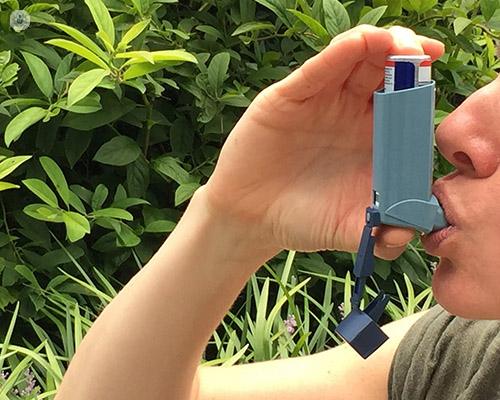Frequently asked questions about asthma
Autore:What are the risk factors for asthma?
There are a few risk factors for asthma. A family history of allergy or asthma is very important to predict the presence of asthma in children. An important trigger for asthma is frequent sneezing.
How can patients tell if they have asthma?
At times it can be difficult to diagnose asthma. For some sufferers, it may develop in springtime, while walking on the grass, with shortness of breath, cough, and chest tightness, along with with a feeling of not being able to breath.
Sometimes it is difficult to know if the symptoms are those of asthma because it starts only with a sensation of anxiety and light chest discomfort. People allergic to dust mites may experience rhinitis and cough in the early morning. Any problem affecting the breathing should be considered as a possible asthma.

Could symptoms of asthma indicate another condition in the lung?
Asthma can arise with any condition affecting the airways, from the nose down to the lungs.
How are patients diagnosed with asthma, and how can they best learn to control it?
Asthma is a clinical diagnosis, made by the doctor with a physical examination and taking note of the patient’s medical history.
Spirometry and challenge tests are sometimes used to confirm diagnosis. The control of asthma can be complex and requires action with medication, as well as by controlling the surrounding environment, such as the bedroom and house, along with pollution and allergies.
What are the different types of inhaled medication available?
Asthma is mainly treated with two types of medications: anti-inflammatory (steroids) and bronchodilators (salbutamol and antihistamines). Antibiotics sometimes may help.
Once developed, how long does asthma last for?
The length of time it lasts for can vary from person to person. It may only last a few months, if well treated, or it may be only seasonal, if it develops due to allergies.
The overall idea is to be followed up until a good balance is reached for the normal living.



